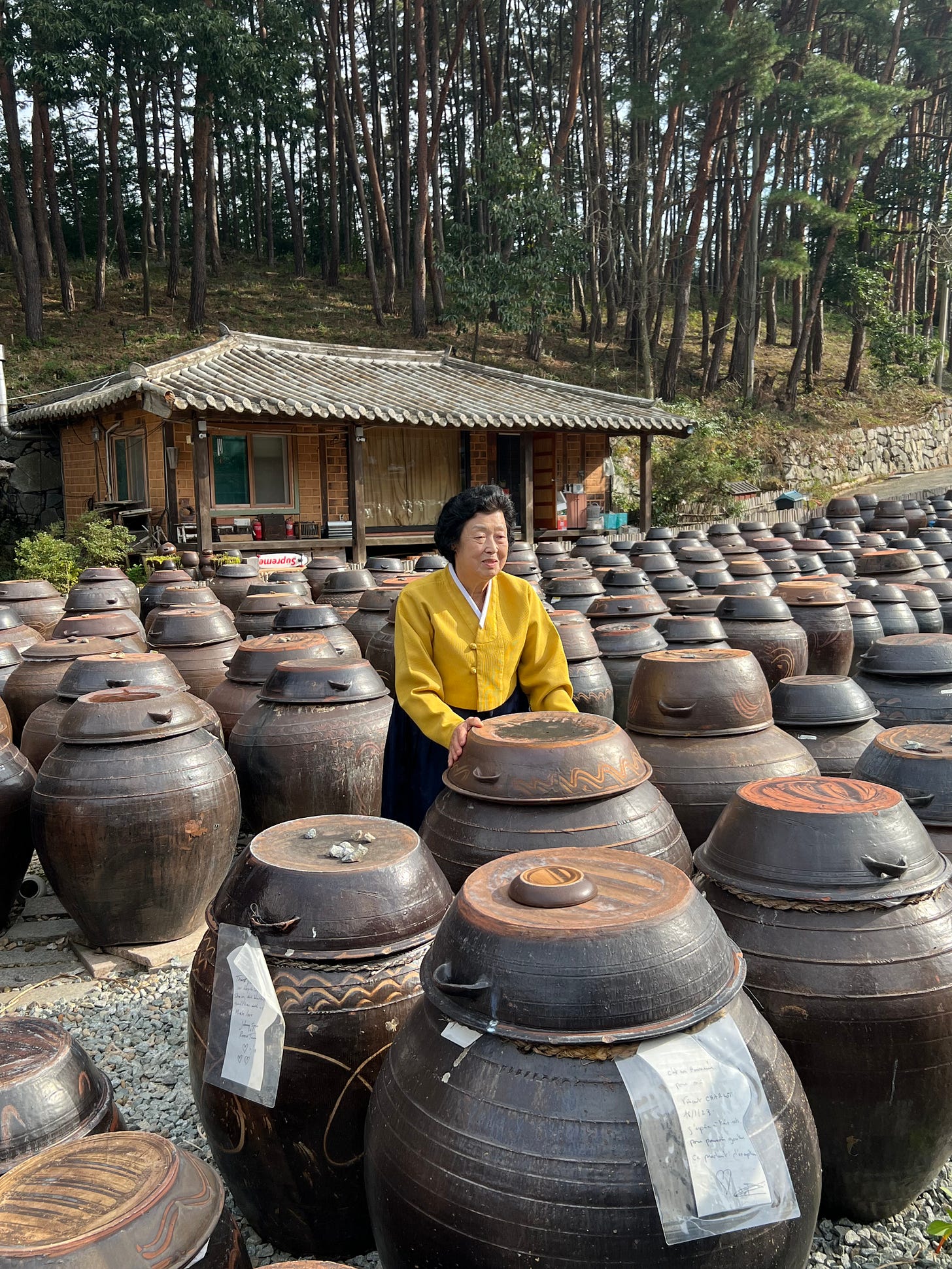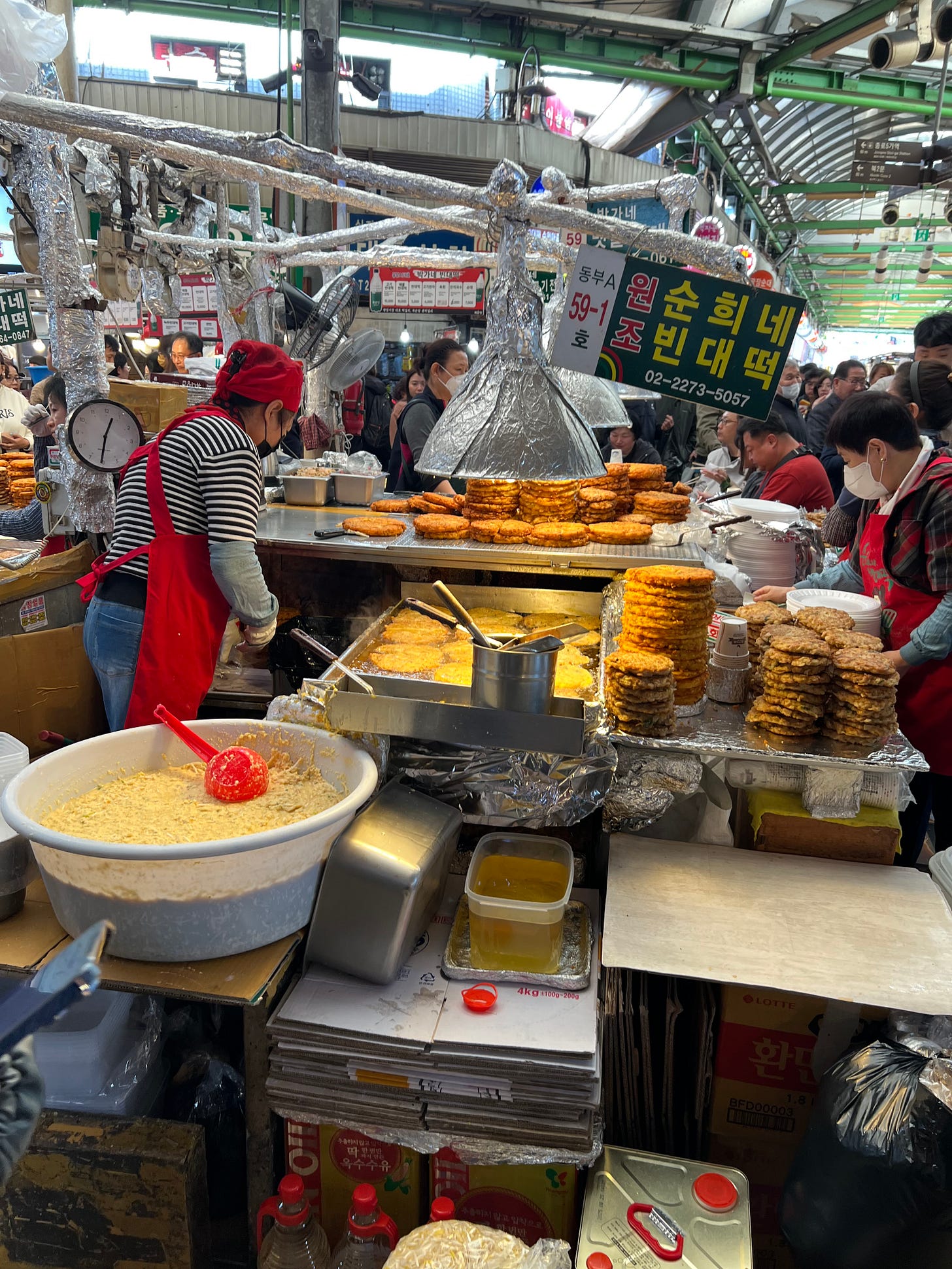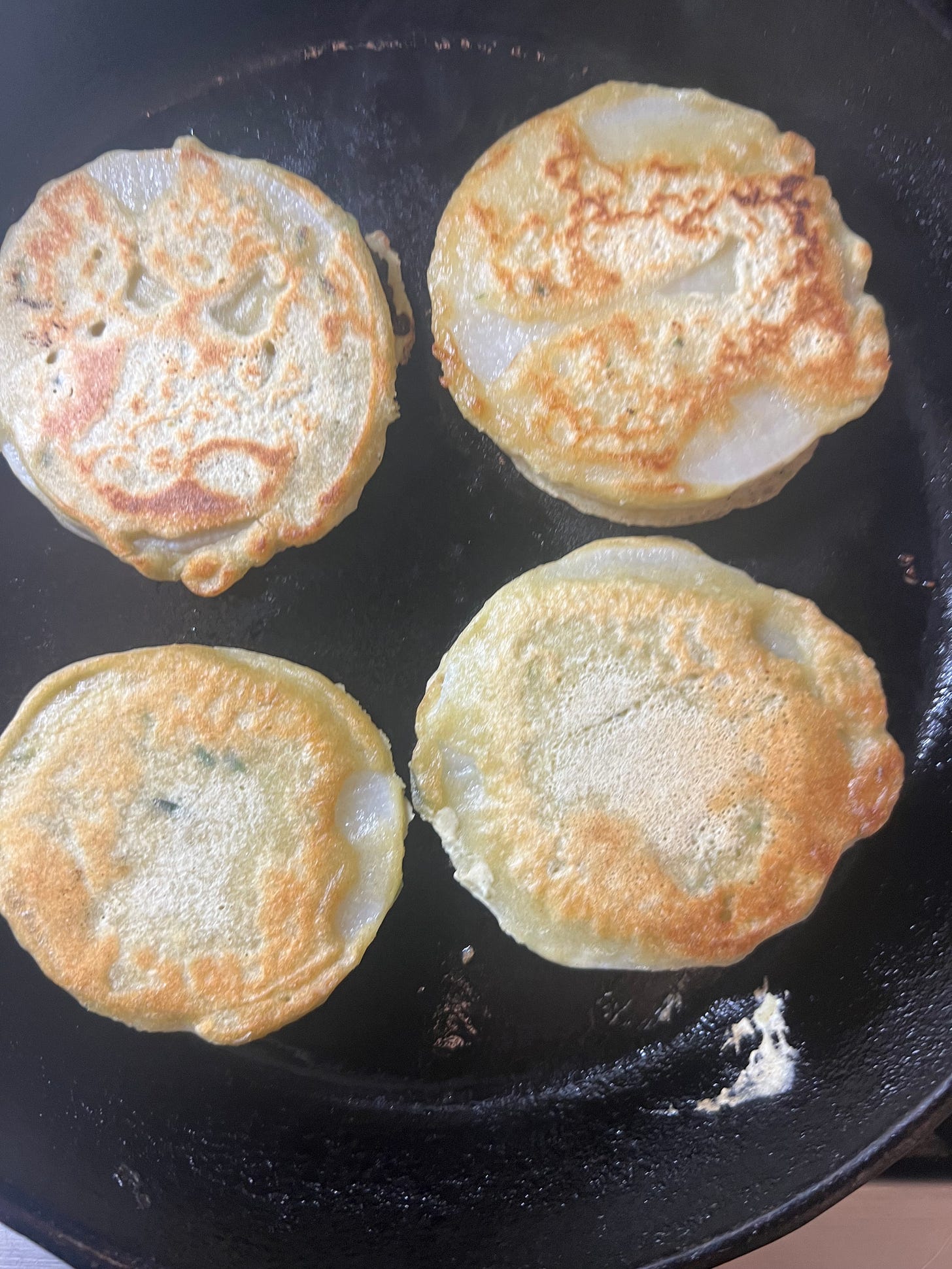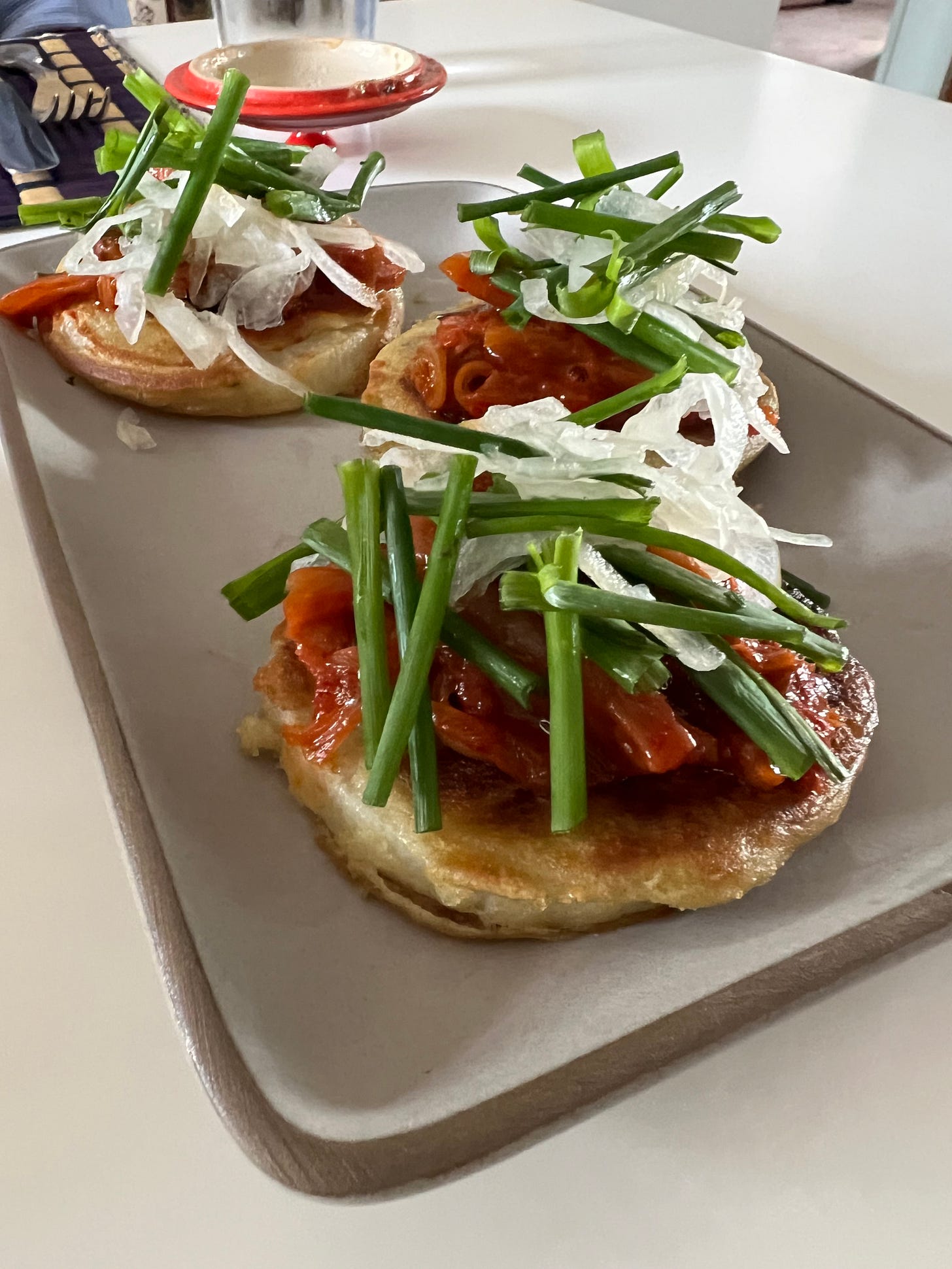This week’s dispatch is from Seoul. I will have a lot more to say about Korean food in the coming weeks and months, once I get back into my own kitchen and begin playing with the ingredients I brought back and processing the things I learned here. In the meantime, I wanted to give you a taste of the amazing food we’ve been enjoying. Before I left, I happened to eat in a few Korean restaurants and cook a few Korean things as a form of research and so I’d have something to share. Please enjoy. —Mitchell
I’m writing this week from Seoul, Korea, where I’m attending the first Hansik Conference on Korean food and food culture. (Hansik means “Korean food.”) Produced by a governmental agency and its new cultural center of the same name, Hansik: Korean Food Promotion Institute, the conference has brought together a select group of top chefs and journalists from around the world to delve deep into topics, such as kimchi, traditional styles of eating, temple cuisine, and Korean barbecue. Although the conference just started yesterday, I came a few days early to get a head start exploring…I mean eating.
Thanks to some amazing advice and organizing by Ellia and JP Park of Atomix in New York and their friends and colleagues on the ground here in Seoul, including JungYoon Choi, Anica Kim, and chef Park Seong-bae, not to mention my own online sleuthing and walking around, I’ve already had so many amazing food experiences. In my spare time I’ve been casing department store basements to try different foods and products. I’ve acquired more stuff than I’ll be able to carry home—mostly ingredients, such as jangs, gochugaru, local grains, and salt, but also a few pieces of traditional brass and contemporary ceramic tableware. I am also very full.
Wandering through the busy Gwangjang street food market, the Norynagjin wholesale fish market, and the Gyeongdong vegetable market has been exhilarating. The variety and quality of products, many of which I’ve not seen at home, is impressive. A particular root, doedoek, is in season now. We tried it raw in the market, a kind of crisp, sweet cross between carrot and Korean pear. And we’ve been served it many ways at various restaurants, including pounded, grilled, and glazed with gochugaru, which was so delicious. I’ve had so many memorable meals, from low-key lunches in workers’ restaurants that specialize in just one dish to multicourse dégustations in Michelin temples.

Sunday we took a trip south to visit the 370-year-old fermented bean paste maker Kisoondo. The matriarch Ki is officially a national treasure for her jangs, which include gamjang (soy sauce), doenjang (fermented soy bean paste), and the ever popular spicy-sweet gochujang. Ki prepared a beautiful, traditional lunch for us, her table groaning with dozens of banchan, side dishes, a central organizing principal in traditional Korean meals. And as we mixed and matched the tastes in the serving bowls before us, she told us how she has been proud to bring her family’s Korean traditions around the world, to Paris, where they kept her sample of three-century-old soy sauce in a safe, and in a couple of weeks, to New York. It’s all been so wonderful.
Before I left New York, I did a little homework, reading through the beautiful new Korean Cookbook from Phaedon, which JP wrote with JungYoon, and watching the Netflix miniseries A Nation of Banchan, which my friend Laurent recommended. Both have proved excellent background. When we walked into lunch at Kisoondo, it was like stepping into the series.
Although at first I had expected the Korean Cookbook book to present the elegant, elevated cuisine JP serves at his restaurants Atomix, Naro, and Atoboy, it was in fact more of a primer on Korean food, with plenty of information about the history and techniques of traditional Korean cuisine. To my surprise, many of the recipes are quite easy to follow to make delicious home-style meals.

I came upon one recipe I made right away, Korean radish and garlic chive pancakes, bunchu mu jeon, because I had purchased a cute Korean radish or mu earlier that week at the greenmarket without a plan for what to do with it and I had garlic chives or bunchu in my fridge. The recipe called for Korean pancake mix—a sure sign to my mind that this is an authentic, user-friendly cookbook because I’ve heard that Korean families always use the mix. Although I often have some Korean pancake mix in the cupboard, too, I used up the last of it on some fried chicken I made recently. Instead, I had to concoct my own. The result was delicious.
Based on what I read and would later experience on the ground here in Seoul, jeon—which is often translated as pancakes, but perhaps would be more accurately termed “fritters”—is a very important and popular category of Korean food. I was familiar with the large scallion, seafood, and kimchi pancakes served in wedges in Korean restaurants back home, but less familiar with small jeon made from leaves of herbs, slices of mushroom, potato, fresh napa cabbage, fillets of fish, and just about everything else Koreans can get their hands on, dipped in an eggy batter and pan fried. These have been part of almost every meal.
When I saw the recipe for these radish pancakes, I had expected the radish to be grated as for latkes. (We always try to fit new foods into categories we know.) Instead, the radish was sliced into discs that were blanched and then dipped in batter before frying. While walking around the Gwangjang market in Seoul, famous for street food, I saw piles of similar-looking jeon made from slices of vegetables among the stacks of bindaetteok (mung bean pancakes) and other jeon for sale. I was hoping to find a radish pancake to try, but there were none to be had. My guide, Anica, said radish jeon were more popular in the south. I’ll have to come back to taste them for myself.
In the meantime, I offer you this recipe, my version of JP’s radish jeon. He notes the flavor of garlic chives goes particularly well with radish, but you could use this on just about any vegetable, as well. If it’s a hard vegetable, such as potato or kohlrabi, blanch it first like the radish, so that it cooks through. Softer vegetables, such as Napa cabbage leaves, whole garlic chives, or thinly sliced carrots, can be battered in their raw state.
RECIPE: Garlic Chive and Radish Jeon (Fritters)
(Makes about 10 pancakes)
1 small piece, mild green chili, such as Korean cheongyang, shishito, or even jalapeño (which often aren’t spicy any more), seeded and roughly chopped (about 1 ounce)
8 blades or so garlic chives, or the equivalent of another allium, such as green garlic, ramps, or spring onion, roughly chopped (about 1 ounce)
1/2 cup water
Salt
2/3 cup Korean pancake mix*
1 small Korean radish or daikon, or a piece of a larger one (about 14 ounces), peeled
Neutral oil, such as soybean or peanut, for frying
To make the batter, in a blender, combine the chili, garlic chives, 1/3 cup of the water, and a pinch of salt. Blend until smooth. Transfer to a small bowl and mix with the pancake mix to make a smooth batter. Add more water if necessary. It should be the consistency of pancake batter. Set aside.
To prepare the radish, slice the peeled radish into 3/8-inch-thick disks. Place the disks in a small saucepan, cover with water, and add about a teaspoon of salt. Set over high heat and bring to a boil. Turn down the heat and simmer 5 minutes, just until the radish is barely tender. Drain. Line a plate with paper towel and lay the blanched radish slices out in a single later to cool. Pat dry.
Heat a tablespoon or so of oil in a frying pan (I used cast iron) set over medium-high heat. Dip the radish slices into the batter, dragging them along the side of the bowl to remove any excess batter, and then set in the hot frying pan. Don’t worry if the radish isn’t completely covered in batter and don’t overcrowd the pan. Fry until golden brown, about 5 minutes, then flip and fry the second side. Remove to a serving plate and keep warm until all of the radish are fried. Serve with soy sauce, dipping sauce, gochujang, ssamjang, or other condiment.
Store leftover jeon in the fridge. To my surprise, they reheat nicely fried in a little more oil until crisp and warmed through. I’ve tried a few different garnishes but they are great plain, too
*As a substitute for Korean pancake mix I used 1/3 cup all-purpose flour, 3 tablespoons rice flour, 2 tablespoons sweet potato starch, 1/2 teaspoon baking powder, ¼ teaspoon garlic powder, and a pinch of salt. It worked great.












Mitchell, this is so fascinating! Thank you--I wish I'd been there in Seoul with you, but your words take me there. I think the cuisine remains relatively unknown in the U.S., except for some ingredients, but that will change with posts like this one. I look forward to more and more and more after you get back to your own kitchen.